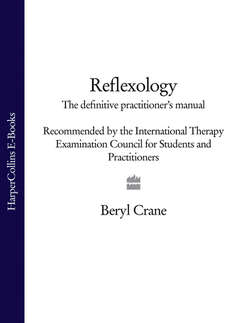Читать книгу Reflexology: The Definitive Practitioner's Manual: Recommended by the International Therapy Examination Council for Students and Practitoners - Beryl Crane - Страница 43
The feet and the spine
ОглавлениеThe feet are extremely important to the general health of our body, and because of certain similarities reflexology theory considers there to be a relationship between the body and the foot. For instance, there are 26 bones in each foot and there are 26 bones in the adult spine. Further, the vertebral column has four natural curves when it is viewed from the side: the cervical curve is rounded forwards, the thoracic curve is gently curved convex towards the posterior, the lumbar spine is also curved convex forwards creating a hollow, while the sacrum curve is like that of the thoracic curve, convex towards the posterior. The foot appears to have four natural curves also, almost imitating the line of the spine. So the curves and the bones of the foot are designated in reflexology as representing the curves and the bones of the spine (figure 2.22a). From this, particular areas of the foot are considered to represent areas of spinal innervation that correspond to those bones (figure 2.22b).
The following four curves or divisions of the feet represent the four body divisions as follows (the two feet symbolize the whole human body including the limbs, not just the torso).
1. The phalanges of the feet represent the head, the uppermost division of the body, containing the brain and chief sense organs.
2. The metatarsus represents the thoracic cavity from the neck to the abdomen, containing our breathing apparatus, the lungs, also the heart and other structures within.
3. The tarsus represents the abdominal cavity, which is between the thorax and the pelvis area, and all organs and structures within it. The tuberosity of the cuboid bone represents the waistline.
4. The calcaneus and talus represent the pelvic cavity, the almost bowl-shaped area that is formed by the pelvic girdle and the adjoining bones of the spine; this creates the central support for the body, and is composed of the two hip bones, the sacrum, and the coccyx and organs and structures within.
